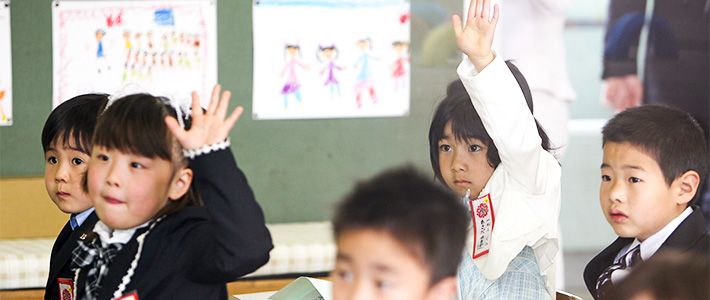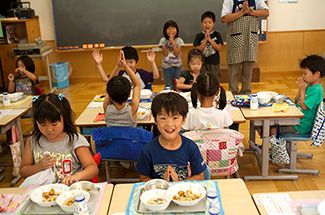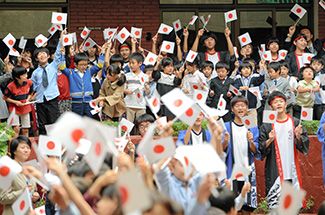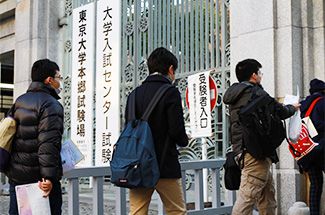
The Japanese School System
Society Culture- English
- 日本語
- 简体字
- 繁體字
- Français
- Español
- العربية
- Русский
Nine Years of Compulsory Education
In Japan, education is compulsory roughly from the age of 6 to the age of 15. The school year begins in April, so almost all children who have turned 6 by April 1 each year enter elementary school. After completing six years of basic education at elementary school, they move on to junior high school, which they attend for three years before graduating.
▼Further reading Power Lunch at Japanese Schools A look at school lunches in Japan, which provide not just nutrition but also instruction in healthy eating habits to last a lifetime. Power Lunch at Japanese Schools A look at school lunches in Japan, which provide not just nutrition but also instruction in healthy eating habits to last a lifetime. |
There are no entrance examinations or tuition fees for public elementary and junior high schools, and textbooks are distributed free of charge. Parents or guardians’ main expenses are uniforms, supplementary materials, lunch fees, and charges for school trips. Many private elementary and junior high schools offer a better chance of getting into top high schools, however, and attract numerous applicants despite sometimes staggering tuition fees.
The school participation rate for the years of compulsory education in Japan is one of the highest in the world at 99.8%. Before attending elementary school, many children also attend preschool from the age of 3, but this is optional.
Foreign children who live in Japan are not legally required to attend school, but if they wish to do so, they can receive free education and textbooks at public elementary and junior high schools, just as Japanese children do.
High Schools and Higher Education
After completing compulsory education, students have a number of choices. There are many different kinds of institutions for study from 15 to 18, including standard high schools offering general education, as well as agricultural, industrial, and commercial high schools. It is also possible to study for a high school diploma at night school or via correspondence while working. There are five-year kōtō senmon gakkō (colleges of technology) too, which combine general education with specialist technical training. In Japan, 98.1% of junior high school graduates continue their education in one of the above ways.
New kinds of schools have emerged recently, such as combined junior high and high schools, which attract students with their six-year programs and thorough preparation for university entrance examinations. Another trend, which may be a sign of changing times and more parents being posted overseas, is the increasing number of schools catering to children who have completed part of their education abroad. Examples include International Christian University High School, where 70% of the student body are returnees.
At the higher education level, there are universities with four-year programs, two-year colleges, and senmon gakkō (vocational colleges) with programs lasting two or more years. After graduating from university, it is also possible to spend another two years in specialist studies for a master’s degree or three or more years for a doctorate.
Many Japanese corporations set a university degree as a minimum requirement for recruitment. As of 2013, 50.8% of high school graduates passed entrance examinations to continue their studies at university. Even so, 97% of those high school graduates who immediately sought work were able to find jobs.
Specialist Skills
For high school graduates who have particular careers in mind, senmon gakkō are a popular choice. Different institutions offer a wide range of subjects including nursing, cookery, agriculture, civil engineering and construction, anime, linguistics, design, video games, film and theater, and sports. Some have even built up an international reputation, such as Mode Gakuen, which specializes in fashion; HAL, which specializes in anime and games; and Kuwasawa Design School.
It is not uncommon for people to attend senmon gakkō to earn specialist qualifications while also studying at university or working. In some cases, companies may pay the tuition fees to boost their employees’ technical knowledge.
Links to more information:
Interested in studying in Japan? Check out the Student Guide to Japan, published by the Japan Student Services Organization in English and many other languages.
(Banner photo: Children in an elementary school classroom in Kazo, Saitama Prefecture. © Jiji.)
▼Further reading
 Japanese Children at School Around the World Japanese Children at School Around the World |  Major Makeover for the University Entrance System Major Makeover for the University Entrance System |